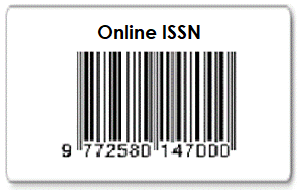Measuring Reading Comprehension Difficulties among Thai International English Students Studying in Indonesian Universities
DOI:
https://doi.org/10.32332/55b49284Keywords:
EFL Learners, descriptive quantitative, reading comprehension, reading difficulties, Thai Pattani studentsAbstract
Mastering reading comprehension is quite challenging for EFL learners, thus the purpose of this study is to measure reading comprehension difficulties among the English Department students of Thailand Pattani currently studying in Indonesia. Descriptive quantitative research was used as the research design within this study. 25 English Department students of Thailand Pattani studying across Indonesian universities had been selected purposively to be the participants. Data were obtained through a 20-item reading comprehension test, which assessed students’ understanding of main ideas, stated and unstated details, and vocabulary. The test was administered online using Google Forms. The data collected were analysed quantitatively by using some formulas. The findings reveal that the overall reading proficiency among English Department students at Pattani, Thailand, is weak, with an average mastery score of 51.52%. The most challenging component was identifying main ideas or topic sentences, with a mastery level of 43% (poor category), followed by vocabulary meaning questions at 48% (poor category). In contrast, questions related to stated and unstated details had a slightly higher mastery score of 57% (weak category). These results highlight the need for targeted instructional strategies in EFL reading comprehension development.
References
Anwar, I. W., & Sailuddin, S. P. (2022). Academic reading difficulties in higher education. Journal of Languages and Language Teaching, 10(2), 309. https://doi.org/10.33394/jollt.v10i2.4849
Arikunto, S. (2013). Prosedur Penelitian, Suatu Pendekatan Praktik. PT Rineka Cipta.
Assalihee, M., & Boonsuk, Y. (2022). Factors Obstructing English Teaching Effectiveness: Teacher Voices from Thailand’s Deep South. IAFOR Journal of Education, 10(1).
Burger, M., Zwane, D. P., Sanders, D. A., & Miller-Weber, K. C. (2025). Exploring open education resources for teaching pre-reading in the intermediate phase. Open Access, 16(1), a519. https://doi.org/10.4102/rw.v16i1.519
Cheng, S. T., Hiong, S. J., & Daniel, E. G. S. (2024). Integrating HOTs in Reading Comprehension in Inclusive Classrooms: Implications from a Dyslexia Study. Journal of International and Comparative Education, 13(2), 127–152. https://doi.org/10.14425/jice.2024.13.2.1205
Fajri, D. R. (2019). AN ANALYSIS OF STUDENT STRATEGY IN COMPLETING TOEFL READING COMPREHENSION TEST. Journal of English Language Teaching and Literature (JELTL), 2(2), 84–91. https://doi.org/10.47080/jeltl.v2i2.598
Fauziah, V., & Dania, R. (2024). An Analysis of Students’ Difficulties in Reading Comprehension of Descriptive Text. Journal of Research and Investigation in Education, 103–108. https://doi.org/10.37034/residu.v2i3.183
Fuqaha’, A., & Wartim, W. (2023). The Difficulties of Determining Main Idea on Students Reading Comprehension. JELITA: Journal of Education, Language Innovation, and Applied Linguistics, 2(2), 101–110. https://doi.org/10.37058/jelita.v2i2.7974
Hafid, N., Purnawarman, P., & Sukyadi, D. (2021). Investigating Constraints and Strategies Faced by the Non-English Students in Answering Reading Comprehension TOEFL Test. Proceedings of the 2nd International Conference on Progressive Education, ICOPE 2020, 16-17 October 2020, Universitas Lampung, Bandar Lampung, Indonesia. https://doi.org/10.4108/eai.16-10-2020.2305256
Hayikaleng, N., Nair, S. M., & Krishnasamy, H. N. (2016). THAI STUDENTS’ MOTIVATION ON ENGLISH READING COMPREHENSION. International Journal of Education and Research, 4(6), 477–486.
Hermida, R. (2019). STUDENTS’ PERCEPTION ON THE CONTRIBUTION OF LITERATURE IN READING AND WRITING SKILLS. Getsempena English Education Journal (GEEJ), 6(1), 133–147.
Kasemsap, B., & Lee, H. Y.-H. (2015). L2 Reading in Thailand: Vocational College Students’ Application of Reading Strategies to their Reading of English Texts. The Reading Matrix: An International Online Journal, 15(2), 101–117.
Mihret, G., & Joshi, J. (2025). The Relationship between Students’ Reading Skill and Academic Achievement: A Comprehensive Investigation. International Journal of Research Publication and Reviews, 6(2), 2171–2181. https://doi.org/10.55248/gengpi.6.0225.0913
Nithideechaiwarachok, B., Maneekanon, O., & Bubphada, T. (2022). Exploring English Language Proficiency, English Language Problems, and English Needs Among First Year Undergraduate Students. International Journal of Learning, Teaching and Educational Research, 21(12), 273–290. https://doi.org/10.26803/ijlter.21.12.15
Nyudak, I. B. G., Pratama, D. G. S., Sugiani, N. N., & Putra, N. A. J. (2024). Employing Augmented Reality in Reading Classes for Indonesian EFL Junior High School Students: A Perspective Analysis. Pedagogy : Journal of English Language Teaching, 12(2), 142–157. https://doi.org/10.32332/joelt.v12i2.9579
Samad, I. A., Jannah, M., & Fitriani, S. S. (2017). EFL STUDENTS’ STRATEGIES DEALING WITH COMMON DIFFICULTIES IN TOEFL READING COMPREHENSION SECTION. International Journal of Language Education. https://doi.org/10.26858/ijole.v1i1.2869
Sasabone, L., Jubhari, Y., Nursyam, Asdar, Kaharto, & Bashar, K. (2023). The effectiveness of Authentic Materials For Reading Comprehension of English for Specific Purposes (ESP) Students. IJOLEH : International Journal of Education and Humanities, 2(2), 125–134. https://doi.org/10.56314/ijoleh.v2i2.173
Sawangsamutchai, Y., & Rattanavich, S. (2016). A Comparison of Seventh Grade Thai Students’ Reading Comprehension and Motivation to Read English through Applied Instruction Based on the Genre-Based Approach and the Teacher’s Manual. English Language Teaching, 9(4), 54. https://doi.org/10.5539/elt.v9n4p54
Shin, P., Brudhiprabha, P., & Surasin, J. (2014). An Investigation into the Readiness of Teaching English as the Lingua Franca in TEFL Countries of ASEAN: The Case of Thailand. . . Number, 5(1).
Sisamouth, W. K., & Lah, S. C. (2015). Attitudes towards Thai, Patani Malay, and English of Thai Undergraduates: A Case Study at Prince of Songkla University Pattani Campus, Thailand. Procedia - Social and Behavioral Sciences, 208, 240–252. https://doi.org/10.1016/j.sbspro.2015.11.200
Suryanto, & Sari, Z. E. (2021). Difficulties and Strategies in Learning English: An Analysis of Students From English and Non-English Education Department in Indonesia: Proceedings of the 4th International Conference on Sustainable Innovation 2020–Social, Humanity, and Education (ICoSIHESS 2020). 4th International Conference on Sustainable Innovation 2020–Social, Humanity, and Education (ICoSIHESS 2020), Yogyakarta, Indonesia. https://doi.org/10.2991/assehr.k.210120.140
Wahyuningsih, C., Mahbub, Moh. A., & Al Fauzi, F. (2024). Exploring Students’ Difficulties in Answering Reading TOEFL Section Test. Linguapedia, 8(1), 41–49. https://doi.org/10.56013/linguapedia.v8i1.2917
Widyawati, Y., & Fitriah, F. (2023). Reading Self-Efficacy of EFL Students on Pre-Service Teaching Program and Practice in the EFL Classrooms. Pedagogy : Journal of English Language Teaching, 11(1), 99. https://doi.org/10.32332/joelt.v11i1.4770
Yanagi, M., & Baker, A. A. (2016). Challenges Experienced by Japanese Students With Oral Communication Skills in Australian Universities. TESOL Journal, 7(3), 621–644. https://doi.org/10.1002/tesj.229
Yoğurtçu, K. (2013). The Impact of Self-efficacy Perception on Reading Comprehension on Academic Achievement. Procedia - Social and Behavioral Sciences, 70, 375–386. https://doi.org/10.1016/j.sbspro.2013.01.075
Downloads
Published
Issue
Section
License
Copyright (c) 2025 Ida Muliawati, Hifnee Jijai, Budi Rizka

This work is licensed under a Creative Commons Attribution-ShareAlike 4.0 International License.
















